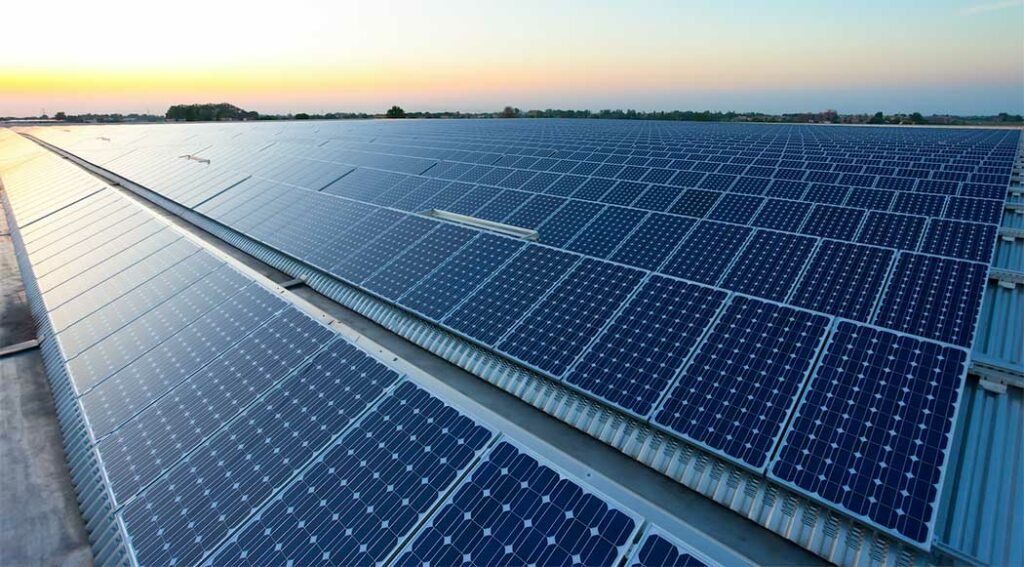Under the spotlight - which solar absorber or reflective surface to use?
According to the latest data, the global solar thermal market is expected to grow at a CAGR of more than 3% over the period of 2020-2025[1] and global solar installed capacity at a CAGR of 13.78% from 2021 to 2026[2]. With government policies expected to drive solar energy generation in all its forms, solar absorber and reflective surfaces are ‘under the spotlight’ now more than ever before (excuse the pun!)
So, what do you need to know about choosing the appropriate absorption or reflective surface, to ensure maximum efficiency in your solar collector equipment? Here are some questions to ask your solar absorber surface specialist:
For solar selective absorption coatings:
- What is the surface’s solar absorption rate?
- How well does it operate at high ambient temperatures?
- What level of corrosion resistance does it offer?
For reflective surfaces for solar applications:
- What is the surface’s total solar reflectance?
- How durable is the surface?
- Is it easy to form the material to fit a range of collector equipment?
Absorption coatings
As a solar absorber surfaces specialist in the UK and across the globe, we are well used to answering these types of questions and our thermal absorption and reflective surfaces have been fine-tuned over the years to offer industry-leading absorption and reflection performance.
Maximising solar absorption rates – our selective absorber coating system ensures maximum absorption with the lowest emissions in flat plate and vacuum tube collector applications. Alanod’s mirotherm® Control, mirotherm®, eta plus®, and mirosol® TS are all selective absorber coatings for solar thermal applications and they have solar absorption rates of up to 97 % and emission rates as low as 4 %.
High ambient temperatures – Alanod’s mirotherm® Control offers smart integrated protection against overheating and operates at up to a 40 °C lower stagnation temperature compared to standard systems.
High corrosion resistance – More than 21 million m2 of Alanod’s mirotherm® solar selective absorber coating on an aluminium substrate have been sold over the last 20 years. An electrochemical treatment of the aluminium on both sides prior to the coating ensures excellent adhesion of the solar coating and high corrosion resistance.
Reflective surfaces
Efficacy, reliability and durability are also key to the long-term success of any solar reflective coating. So, how does Alanod measure up?
Maximising total solar reflectance – Alanod’s Reflective 85 and MIRO-SUN® (used for CPC reflectors) and MIRO-SUN®PV (used as a concentrating reflector material for photovoltaic applications) offer total solar reflectance of either 85 % or 90 %. This high level of total solar reflectance is achieved using our anodising, pvd coating and lacquering expertise.
Increasing durability – with 10-year material warranties on outdoor applications, a transparent, extra clear nanocomposite lacquer is applied to Alanod Reflective 85, MIRO-SUN® and MIRO-SUN® PV reflecting surfaces, making them weather, heat, UV and scratch resistant.
Flexibility built in – designed to be used in evacuated tube collectors, parabolic trough power plants, micro parabolic troughs, photovoltaics, solar cookers and heliostats, Alanod’s range of solar reflectance coatings, layered on top of anodised aluminium or PVD coated aluminium, are highly flexible and can be formed to suit any of these solar energy concentration requirements.
Whether you are facing a hot summer, or wondering where the sun has gone, solar energy generation is big business. So why not find out how to increase your product’ efficiency, durability and reliability by visiting us at www.alanod.co.uk

